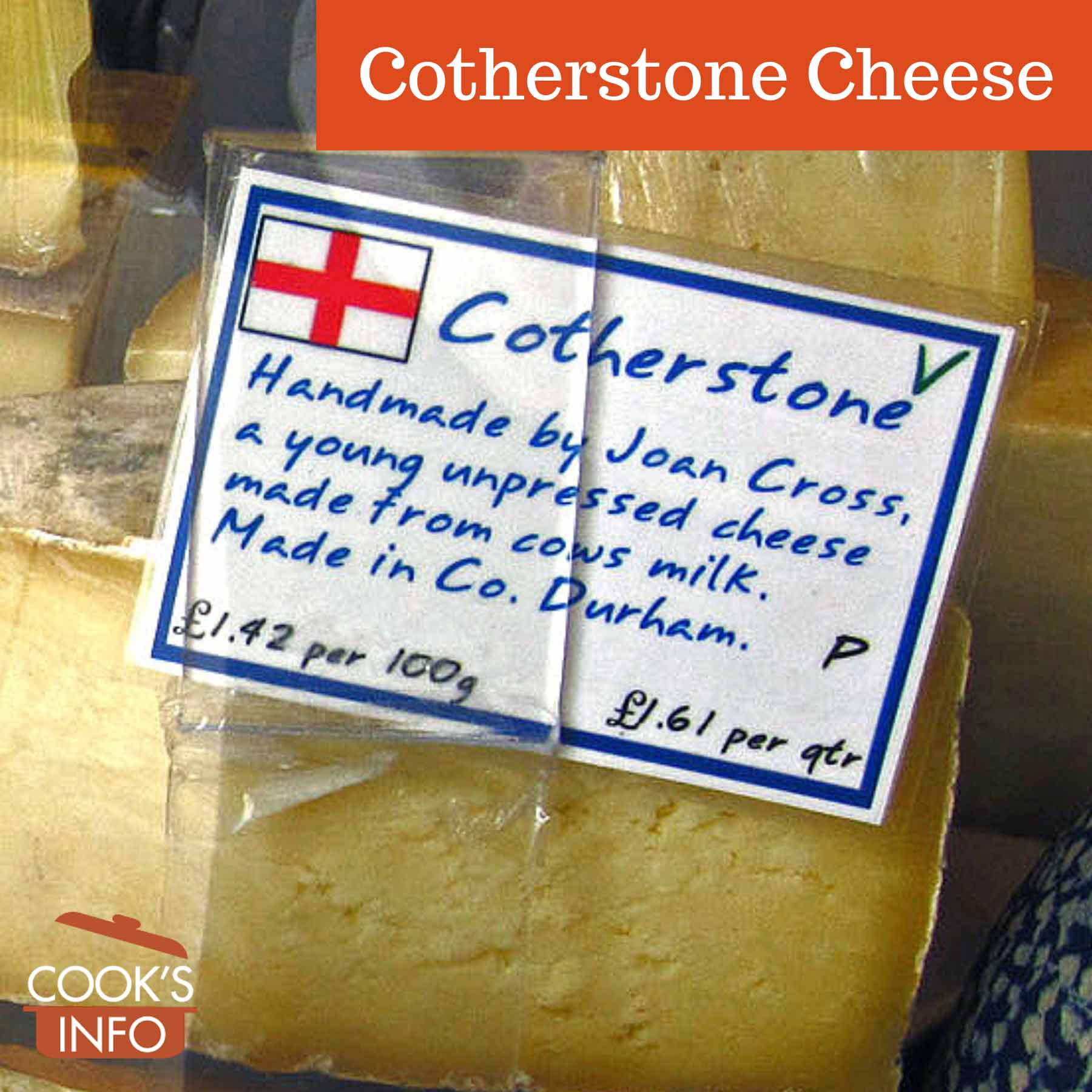
Cotherstone cheese. Keith Williamson / flickr / 2010 / CC BY 2.0
Cotherstone cheese is a semi-hard cheese with a sharp, slightly tangy taste. It is made in Cotherstone, Yorkshire, England.
It has a crust like Camembert, but is covered with yellow wax. Inside, the cheese has an “open” texture, like Wensleydale.
It is made from full-fat, raw milk, in rounds 20 cm wide and 10 cm tall (8 inches x 4 inches), weighing 2 kg (4 ½ pounds). Vegetarian rennet is used.
Cotherstone cheese needs to mature for at least 1 to 3 months. As it ages, the crust turns from gold to pink.
There are two versions of Cotherstone cheese, a white version and a blue-veined version. The blue-veined version is sometimes referred to as “Yorkshire Stilton.”
Nutrition
Cotherstone cheese has a fat content of about 45%.
History Notes
Cotherstone cheese is surmised to be a variation of Wensleydale cheese, possibly made as far back as the 1600s; the wax coating meant that it could be stored for up to a year.
Cotherstone is a village in County Durham that in the Domesday Book was referred to as Cudrestone.
The Cotherstone name was only applied to the cheese at the beginning of the 1900s. A woman named Mrs Birkett, who made the cheese up until 1940, helped to promote it as a cheese separate from Wensleydale.
Production ceased during the Second World War and didn’t begin again until towards the end of the 1900s.
Literature & Lore
“Them’s all Roman Catholics there,” said the driver, as we left it behind; and by-and-by, when we came to Cotherstone — Cuthbert’s Town — “Here ’tis nothin’ but cheese and Quakers.” — White, Walter. A Month in Yorkshire. London: Chapman and Hall. 1858. Page 169.

